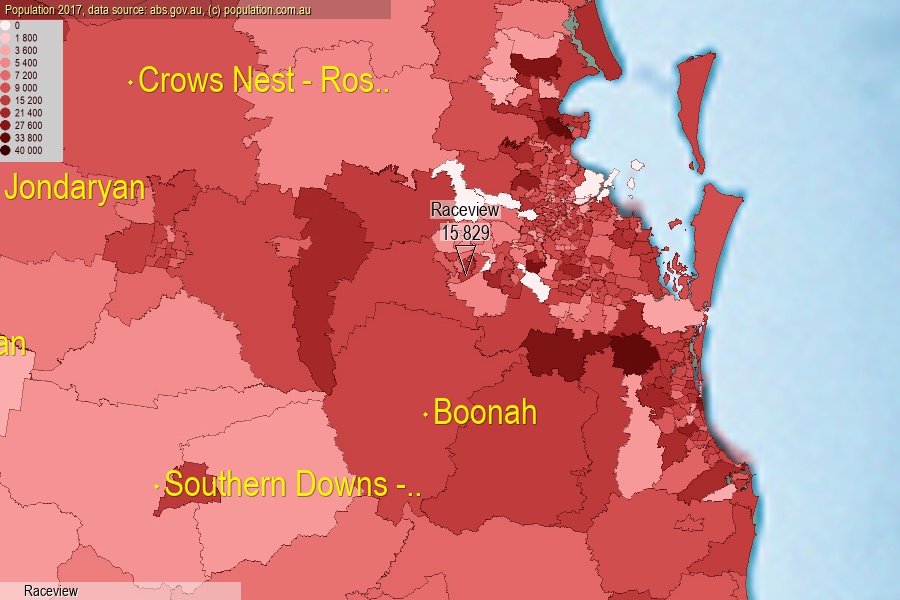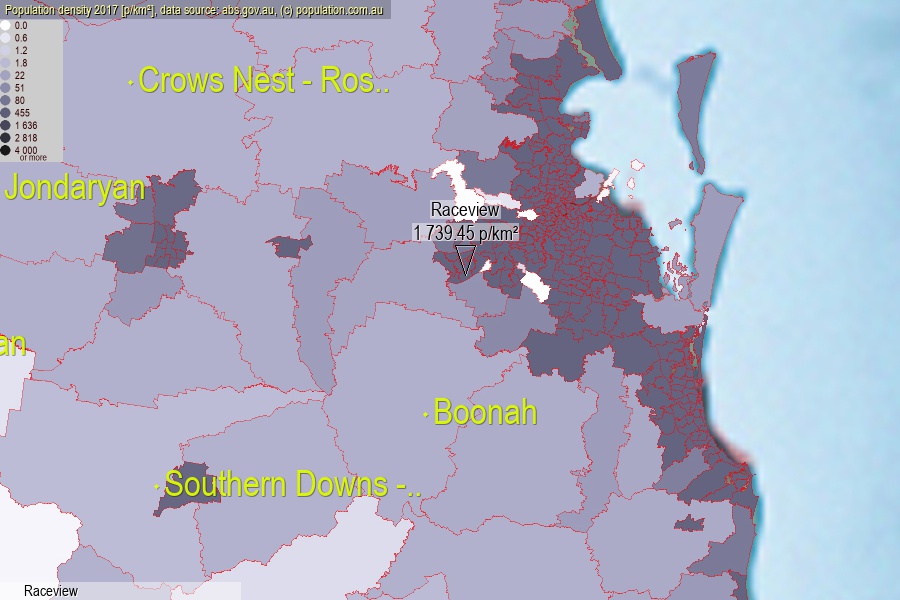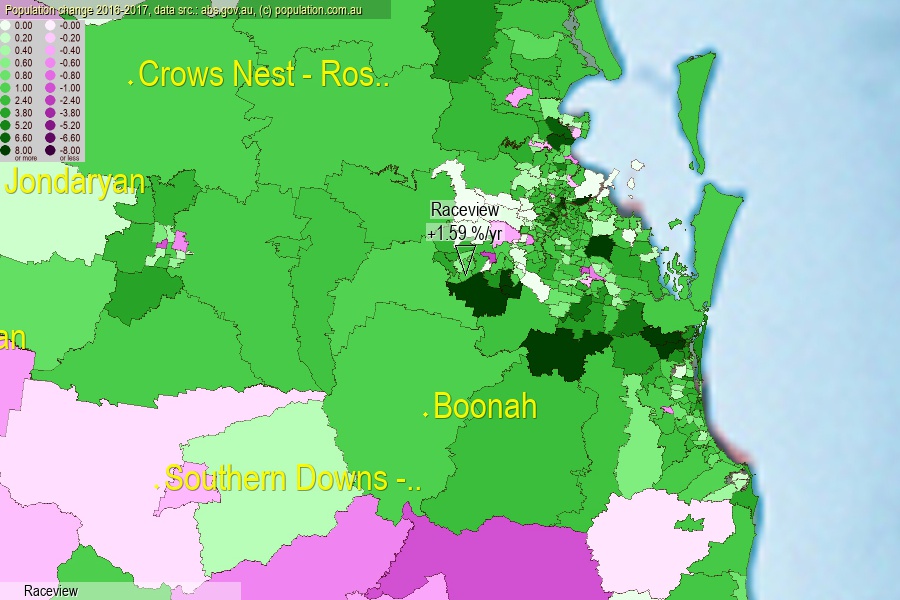 population.com.au
population.com.auLast official estimated population of Raceview (as Statistical Area Level 2) was 15 829 people (on 2017-06-30)[2]. This was 0.06% of total Australian population and 0.317% of QLD population. Area of Raceview is 9.10 km², in this year population density was 1 739.45 p/km² . If population growth rate would be same as in period 2016-2017 (+1.59%/yr), Raceview population in 2025 would be 17 961. [0]



Click to enlarge. Raceview is located in the center of the images.
Population [people], population density [p./km²] and population change [%/year] [2]
View borders » (new window) [4]
[1991-1992] +5.44 %/Yr.
[1992-1993] +8.66 %/Yr.
[1993-1994] +11.77 %/Yr.
[1994-1995] +5.28 %/Yr.
[1995-1996] +3.42 %/Yr.
[1996-1997] +2.74 %/Yr.
[1997-1998] +2.02 %/Yr.
[1998-1999] +0.44 %/Yr.
[1999-2000] +3.42 %/Yr.
[2000-2001] +2.52 %/Yr.
[2001-2002] +3.52 %/Yr.
[2002-2003] +3.93 %/Yr.
[2003-2004] +2.99 %/Yr.
[2004-2005] +4.27 %/Yr.
[2005-2006] +4.62 %/Yr.
[2006-2007] +5.36 %/Yr.
[2007-2008] +6.48 %/Yr.
[2008-2009] +4.96 %/Yr.
[2009-2010] +3.94 %/Yr.
[2010-2011] +1.16 %/Yr.
[2011-2012] +2.62 %/Yr.
[2012-2013] +1.68 %/Yr.
[2013-2014] +0.62 %/Yr.
[2014-2015] +0.66 %/Yr.
[2015-2016] +0.74 %/Yr.
[2016-2017] +1.59 %/Yr.
[0] Calculated with linear interpolation from officially estimated population
[1] Read more about SA2 and Australian Statistical Geography Standard (ASGS) on abs.gov.au
[2] Population data from Australian Bureau of Statistics (Population and density: 2017; change: 2016-2017)
[3] Digital Boundaries: Australian Statistical Geography Standard (ASGS) 2016.
[4] Border coordinates are simplifyed using Ramer-Douglas-Peucker algorithm.